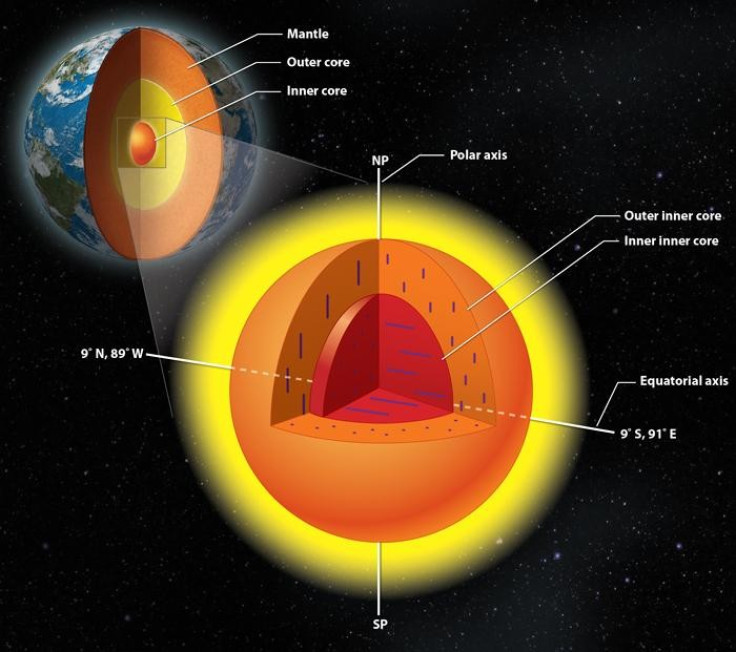Formation of the Earth's inner core is so baffling, scientists say it shouldn't exist
A new study contradicts the standard model of our planet's evolutionary history.

According to the popular view of the Earth's formation, about one billion years ago, our planet's molten liquid inner core spontaneously began to crystallise, growing rapidly to the extent that it reaches today – around 760 miles in diameter.
However, a new study published in the journal Earth and Planetary Science Letters contradicts this theory, suggesting it is impossible.
Researchers from Case Western Reserve University in Ohio argue that the standard narrative is overlooking a key detail of how crystals form, namely, that they require a huge drop in temperature that is unlikely to have happened inside the core.
In fact, once this is taken into account, the team suggest that the Earth's inner core shouldn't exist at all.
"Everyone, ourselves included, seemed to be missing this big problem, that metals don't start crystallising instantly unless something is there that lowers the energy barrier a lot," said author Steven Hauck, a professor of Earth, Environmental and Planetary Sciences at Case Western.
It is well known that a material must be at or below its freezing temperature to become solid – or crystallise – and making the first crystals requires extra energy. The extra energy that is required – known as the nucleation barrier – is what the standard model of the Earth's formation has been missing until now.
For the liquid to overcome the nucleation barrier and start to solidify, however, the liquid has to be cooled well below its freezing point – a process known as supercooling. Alternatively, something has to be added to the liquid metal in the core to substantially reduce the amount of supercooling required.
But supercooling something as massive as the Earth's inner core is difficult, to say the least.
"At the pressures of the core, it would have to cool 1,000 degrees Kelvin or more below the melting temperature in order to crystallise spontaneously from pure liquid," Hauck told Live Science. "And that's a lot of cooling, especially since at the moment, the scientific community thinks the Earth cools maybe about 100 degrees K per billion years."
In this context, "the inner core shouldn't exist at all, because it could not have been supercooled to that extent", Jim Van Orman, also a professor of Earth, Environmental and Planetary Sciences at Case Western, told Live Science.
The researchers suggest that the nucleation barrier of the molten inner core must have been lowered by something else. One possibility is that a huge nugget of solid metal sunk from the mantle into the inner core, lowering the nucleation barrier like an enormous ice cube.
However, for this hypothesis to hold, the chunk of metal must have been truly vast, perhaps the size of a large city.
The researchers think this is plausible, but they are calling on other members of the scientific community to put forward suggestions of their own.





